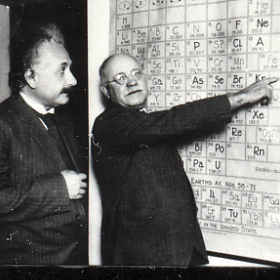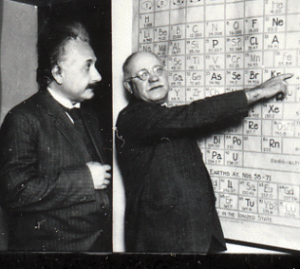
Next week brings one of the more festive holidays of the year, honoring the principle patron saint of Ireland. This is, of course, St. Patrick’s Day and is held on March 17, in honor of the day St. Patrick is believed to have died. But there’s another holiday of sorts that has been building steam in recent years and is itself quite festive. Unlike other holidays commemorating people or events this one celebrates…a number. A mathematical constant, to be precise—the number originally defined as the ratio of a circle’s circumference, pi.
Pi is also known as Archimedes’ Constant, after the Greek mathematician who generated one of the early calculations for the number nearly 2,000 years ago. It is a ubiquitous figure applied in a wide variety of fields. Astronomers use it to calculate the sizes of planets or the trajectories of spacecraft, biologists use it to determine the structure of DNA, and even clockmakers use it in designing clock pendulums. Usually identified by its symbol π, it is an irrational number. This means it can’t be expressed as a ratio of two whole numbers and so contains an infinite number of digits when written as a decimal (3.1415926535…). It is generally rounded off to 3.14, which is what inspired the burgeoning holiday.
During a 1988 staff retreat of San Francisco’s Exploratorium science museum, physicist and active community member Larry Shaw made the connection between March 14 (3.14) and the rounded-off estimate of π. He thought this made for a great excuse to hold a staff party on that day and figured a good way to celebrate “Pi Day” was with pies. He and his wife baked several and the festivity proved so popular that they did it again the following year.
The tradition continued and soon expanded beyond the walls of the Exploratorium. Several years after that first Pi Day, Shaw’s daughter realized March 14 was also the birthday of a fellow who knew a thing or two about π, Albert Einstein. Born in Germany on March 14 1879, he would go on to become arguably the greatest scientist of the twentieth century. As a physicist he revolutionized humankind’s understanding of the universe with his theories of motion, mass and time.
 Einstein first visited the United States in 1921, lecturing in New York City and visiting the White House. A decade later he returned, arriving in America in December, 1930 for a three- month trip that started in New York, continued to California via ship through the Panama Canal,
Einstein first visited the United States in 1921, lecturing in New York City and visiting the White House. A decade later he returned, arriving in America in December, 1930 for a three- month trip that started in New York, continued to California via ship through the Panama Canal,
and returned back East by railroad.
The main purpose of his visit was to work with scientists at Mt. Wilson Observatory and the California Institute of Technology. By this point in his life he was quite famous and found himself inundated with invitations to speak or be honored during the trip. He politely turned
down all offers, preferring to maintain privacy while he traveled. One of the inviters was Lowell Observatory, and his signed letter declining the observatory’s request is carefully preserved in Lowell’s Putnam Collection Center.
Einstein did schedule a few tourist stops along the train trip back East, including a February 28, 1931 visit to the Grand Canyon. He was honored there by Hopi natives in a ceremony preserved for history by a picture of Einstein, wearing a decidedly non-Hopi headdress, standing in front of the Hopi House.
According to a March 1 article printed in the March 2 issue of The New York Times, “Yesterday at the Grand Canyon of the Colorado River in Arizona the Hopi Indians made Professor Albert Einstein a chief of the tribe. But the Indian council, which has honored Presidents and other notables, was puzzled to assign a name to the scientist. ‘What’s his business?’ (they) asked. ‘He invented the theory of relativity,’ they were told. ‘All right,’ was the reply, ‘we’ll call him Great Relative.’”
Thanks to the epiphany by Larry Shaw’s daughter about Einstein’s birthday, Pi Day turned into a celebration of both the mathematical constant and the man who made famous use of it. And that is the story of Pi Day, a time to celebrate numbers, remember one of the world’s most famous scientists, and practice the art of stuffing one’s face with pie.